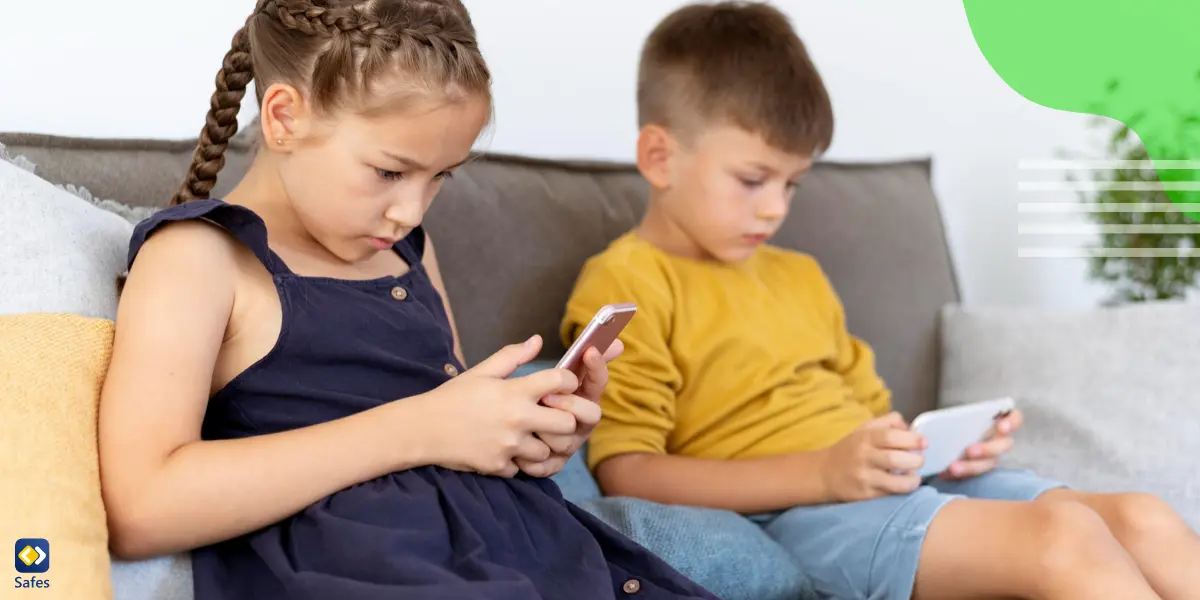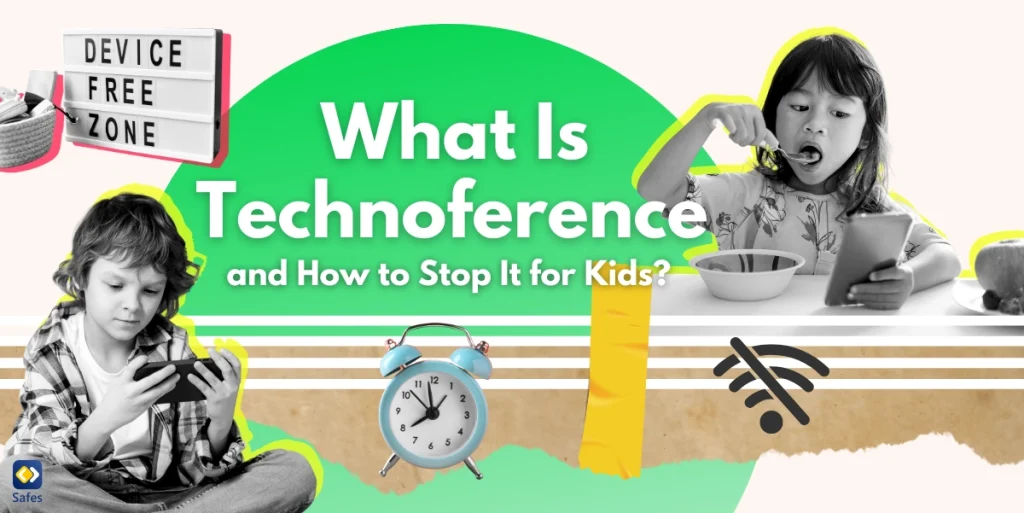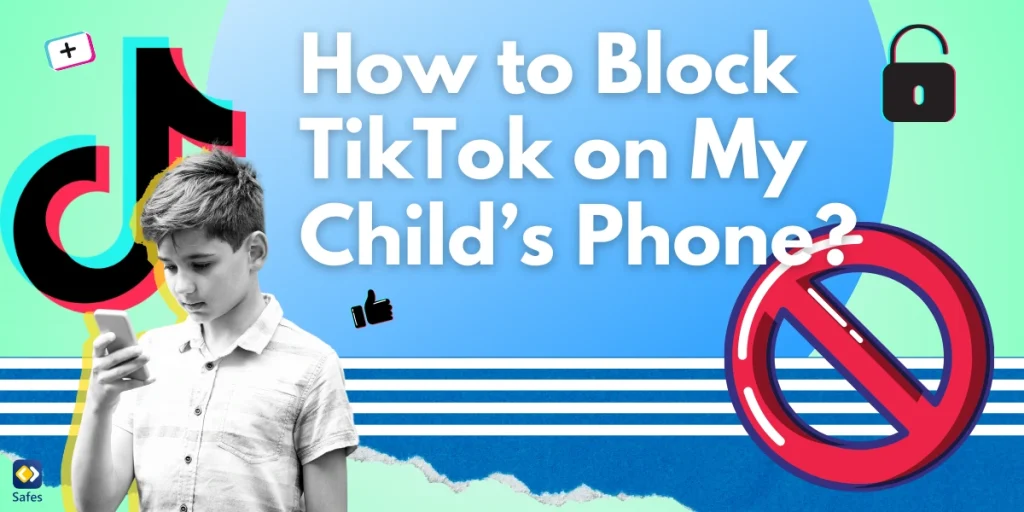Now that every child has a mobile phone, it’s common to see them glued to screens. This constant connection to technology can interfere with family time and real-life interactions, a phenomenon known as “technoference.” As parents, it’s natural to worry about the impact this has on our children’s social skills, emotional well-being, and family relationships.
Technoference can sneak into our lives in subtle ways, during dinner, bedtime, or even playtime, leading to missed opportunities for meaningful connections. While technology offers incredible learning and entertainment opportunities, it’s essential to find a balance. In this blog, we’ll explore what technoference is, why it’s important to address it and provide practical tips on how to minimize its effects. First, let’s make sure you completely understand technoference meaning.
What Is the Meaning of Technoference?
Technoference is the term used to describe the interruptions and disturbances in personal relationships and interactions caused by technology. It refers to situations where devices like smartphones, tablets, or computers interfere with face-to-face communication and quality time between people, such as family members, friends, or romantic partners. For example, when someone is more focused on their phone than the conversation they’re having with someone in the same room, that’s an instance of technoference.

What Is the Difference Between Phubbing and Technoference?
Phubbing and technoference both involve technology interfering with personal interactions, but they are slightly different. Phubbing is when someone ignores the person they’re with by focusing on their phone instead. For example, checking social media while having a conversation with a friend.
On the other hand, technoference is a broader term that refers to technology’s interruption in relationships and interactions. This includes phubbing, but also other situations like a parent checking emails during family dinner or a child being distracted by a tablet during homework time.
In short, phubbing is a specific behavior, while technoference covers all kinds of tech-related disruptions in personal connections.
What Is the Effect of Technoference on Child Development?
Based on an article about the impacts of technology on children’s health, there are numerous negative effects of technology on children, as well as positive effects. It is so crucial for parents to understand these effects and prevent the consequences. For example, poor verbal intelligence, and decreased memory performance are two of these impacts adversely affecting children’s future. Here are other areas where it can impact children:
- Emotional Well-being: Technoference parenting can lead to feelings of neglect or rejection. If parents are frequently distracted by devices, children might feel less valued and important, impacting their self-esteem and emotional security.
- Cognitive Development: Excessive screen time can interfere with activities that stimulate cognitive development, such as reading, and paying. These problem-solving activities for kids are important to help them grow. These activities are essential for brain development, problem-solving, and creativity.
- Behavioral Issues: Technoference can lead to behavioral problems too. Children may become more prone to tantrums, frustration, and impatience if they are constantly interrupted by technology.
- Physical Health: Increased screen time often means less physical activity, which can lead to issues like obesity and poor motor skills. Additionally, excessive use of devices can affect sleep patterns, leading to fatigue and other health problems.
- Parent-Child Bonding: Quality time spent together strengthens the parent-child bond. When technology disrupts this time, it can weaken the emotional connection between parents and children, impacting the child’s sense of security and trust.
How to Stop Technoference for Our Children?
It’s ok if you don’t know how to keep digital devices away from your children. However, it’s important to learn new ways and ideas to distract them and instill healthier habits. Here are some ways you can try to avoid technoference in children.
Tech-Free Zones
Specify certain areas of the house, like the dining room and bedrooms, as tech-free zones. So the whole family members cannot use their phones and other devices when spending time in these places. This encourages more face-to-face interactions and ensures that mealtimes and bedtime are free from technological distractions.
Tech-Free Times and Screen Limits
There also should be certain times during the days when using phones is not allowed. You can establish clear rules about how much screen time is allowed each day. For example, do not let your kids play with phones before going to bed. Remember that parents also need to obey these rules. Otherwise, children won’t learn these healthy habits. Children often imitate their parents’ behavior. Show them how to balance technology use by setting a good example.
Tech-Free Hobbies and Family Activities
Plan regular family activities that don’t involve screens, such as going for a walk, or doing crafts together. There are also the top 10 family board games you can check. This helps strengthen family bonds and encourages kids to engage in offline activities. Moreover, you should support your children in pursuing hobbies and interests that don’t involve screens, such as sports, reading, drawing, or playing a musical instrument. This helps them develop a variety of skills and reduces their reliance on technology for entertainment.
Using Technology Together
When your child wants to use their phone or tablet, try to make it a shared experience. Watch a movie as a family, play video games together, or use educational apps that involve everyone. This can turn screen time into a bonding activity rather than a solitary one. Also, try talking to your children about the importance of these activities and how to balance screen time with other activities.

Final Word
Managing technoference is crucial for our children’s healthy development and strong family bonds. By creating tech-free zones, setting screen time limits, and engaging in offline activities, we can ensure our children grow up with a balanced relationship with technology. To help you achieve these goals, you can use Safes, our parental control app. Safes makes it easier to set screen time limits, monitor usage, and enforce tech-free zones, providing a seamless way to manage your family’s digital habits. The app functions similarly to iPhone parental controls, but with wider access to necessary options. With Safes, you can ensure your children have a healthy balance between screen time and real-life interactions.
Please don’t hesitate to download Safes for Android and iOS today and start your free trial.




